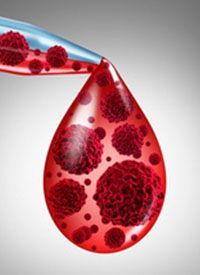IS-002 Improves Prostate Cancer Visualization Prior to Robotic Prostatectomy
The novel, near-infrared, prostate-specific membrane antigen-targeted fluorophore IS-002 was safe, well-tolerated, and allowed for enhanced intraoperative tumor detection in patients undergoing robotic prostatectomy.

The novel, near-infrared, prostate-specific membrane antigen-targeted fluorophore IS-002 was safe, well-tolerated, and allowed for enhanced intraoperative tumor detection in patients undergoing robotic prostatectomy, according to findings from a phase 1 study (NCT04574401) presented at the 2022 American Urological Association Annual Meeting.1
IS-002 in combination with fluorescence-guided surgery (FGS) detected residual adenocarcinoma in the resection bed of 9 of 24 (37.5%) patients with high-risk prostate cancer that was not identified using conventional white light imaging. This included invasions in the neurovascular bundle (n = 4), bladder neck (n = 2), seminal vesicles (n = 1), levator ani (n = 1), and Denonvilliers’ fascia (n = 1).1
Use of IS-002 plus FGS also intraoperatively detected regional nodal metastases in 12.5% of patients. Additionally, ex vivo imaging confirmed IS-002 prostate tumor signal in 95.8% of patients. Study authors noted that the study treatment provided excellent tumor discrimination over background.
Investigators found that IS-002 plus FGS was well tolerated. Among patients who received IS-002 experienced only grade 1 adverse effects (AEs), consisting of green urine/feces (n = 23) and bruising/rash (n = 2).1
In the phase 1 dose-escalation study, patients received intravenous IS-002 24 hours prior to surgery. IS-002 was given at 4 dose levels (25 µg/kg, 50 µg/kg, 100 µg/kg, and 150 µg/kg) with 6 patients in each group. Surgeons performed robotic prostatectomy using the da Vinci X/Xi Surgical System and Sensitive Firefly Fluorescence Imaging. The pharmacokinetic and safety profile of IS-002 were assessed over a 14-day period.
The primary end point of the trial was treatment-emergent AEs assessed by Common Terminology Criteria for Adverse Events v5.0. Secondary end points included IS-002 maximum plasma concentration, IS-002 half-life, IS-002 clearance, and IS-002 area under the plasma concentration vs time curve. The number of lymph nodes with IS-002 fluorescent signal that contain metastatic disease and the number of patients with above-background IS-002 fluorescent signal observed on the prostate surface were also included as exploratory end points.2
To be eligible for the trial, patients needed to be treatment-naïve and between the ages of 18 and 75. Patients also needed to have a Cancer of the Prostate Risk Assessment score greater than 6, T3 a or b disease upon imaging, or regional lymphadenopathy suspicious for nodal metastases.2
Patients with active hepatitis B virus or hepatitis C virus infection, a known history of bone metastasis, or a known history of acute or chronic liver or kidney disease were not eligible for the trial. Patients who were currently participating in another study or received study therapy within the past 6 months were also not permitted.2
“Based on the very encouraging results of this phase 1 study, a randomized phase 2 study is planned,” lead author Hao Nguyen, MD, PhD, and colleagues wrote in conclusion. Nguyen is a urologic oncologist at the UCSF Helen Diller Family Comprehensive Cancer Center.
References
- Nguyen H, Antaris A, Van den Berg N, et al. Results of the Phase 1 safety and efficacy prostate specific membrane antigen (PSMA) targeting fluorophore for image guided surgery in patients undergoing robotic prostatectomy. Paper presented at: 2022 American Urological Association Annual Meeting; May 13-16. New Orleans, LA. Abstract PD54-11.
- A phase 1 study of IS-002 injection in patients undergoing robotic prostatectomy. ClinicalTrials.gov. Updated October 22, 2021. Accessed May 16, 2022. clinicaltrials.gov/ct2/show/NCT04574401



